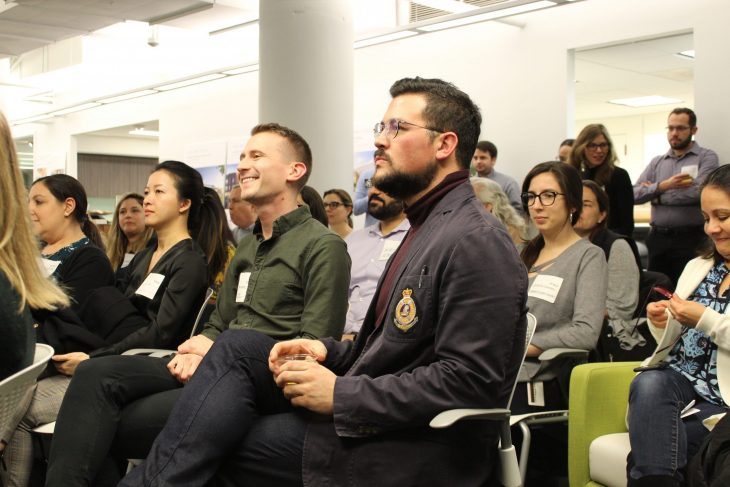Sharing the top three key takeaways from the recent WIELD Speakeasy hosted by EYP and Leigh Stringer in Washington, D.C.

On February 6, EYP DC hosted WIELD’s Speakeasy series event which was focused on work flexibility in the design industry. The panel included Mary Cregut, Chief Human Resources Officer, EYP; Laura Doran, Architect, Bureau of Overseas Buildings Operations, State Department; Shannon McLendon, Director of Operations, The Motley Fool; Jonathan McIntyre, Senior Workplace Strategist, Total Workplace Program Management Office, GSA; Leigh Stringer, Managing Principal, EYP DC (Moderator).
In the design industry, many started to leave the profession altogether because they need more flexibility in the way they work. This is causing a major brain drain for firms and is costly to the industry. Knowledge is getting lost and so is diversity and innovation as a result. The needs for work flexibility are many. Employees might have children or need to care for an elderly parent. They might need to move further away from the office in order to afford housing which increases their commute. They might face an illness or other obstacle that requires something other than a “traditional work week.”

The panel opened up exploring if the design industry is as unique as other creative industries that have transformed how, when and where work happens. Are there any good solutions out there? Where are we headed? What is the biggest impediment to flexibility and what is the biggest risk to being “too” flexible?
Here are our top three takeaways from the event:
Is there such a thing as being too flexible?
Leigh used the example of Yahoo’s decision to end their work from home policy which left many wondering if remote work was the best idea for team work and collaboration.
The panel kicked off a discussion about how many think flexible work is easy – it’s not. In order to have a successful remote team, we first must understand how difficult flexible work actually is and the stress it can put on middle management. There are some kinds of work that can’t be done successfully out of the office. “Part of flexible work is knowing when you need to be present and when you can be virtual,” noted Johnathan. Mary countered that statement by adding, “the fear of being too flexible, people losing their connection, and ability to work on a project that stops people from making decisions to be flexible.”

To make the cultural shift to a flexible workplace, you must provide extra TLC to those who are resistant.
If you are considering transitioning to a more flexible work policy, it is important to remember that some employees may struggle with the change more than others. To make this shift, extra support must be provided to those who are hesitant or resistant. Laura suggested testing out a pilot period to learn what does and does not work best for individual teams. A few teams can be selected to try various methods of flexible work and then assess if it worked. It is important to remember to unleash boundaries and find new ways of working during these pilot periods.
Younger generations expect flexible workplaces.
Mary shared an anecdote about a time when she was sitting with her recent college grad son and 20 of his friends who were all either business or engineering majors. “All of them except one had gotten jobs working with companies who had flexible work schedules – including four-day work weeks or half-days on Fridays. Now this is becoming an expectation for people coming out of college and any leader in any capacity has to try and embrace that and figure out how implement it.”
As organizations try to compete to obtain the top fresh talent, we must to reconsider how to offer flexible work schedules to create respect and retain employees in the future.


